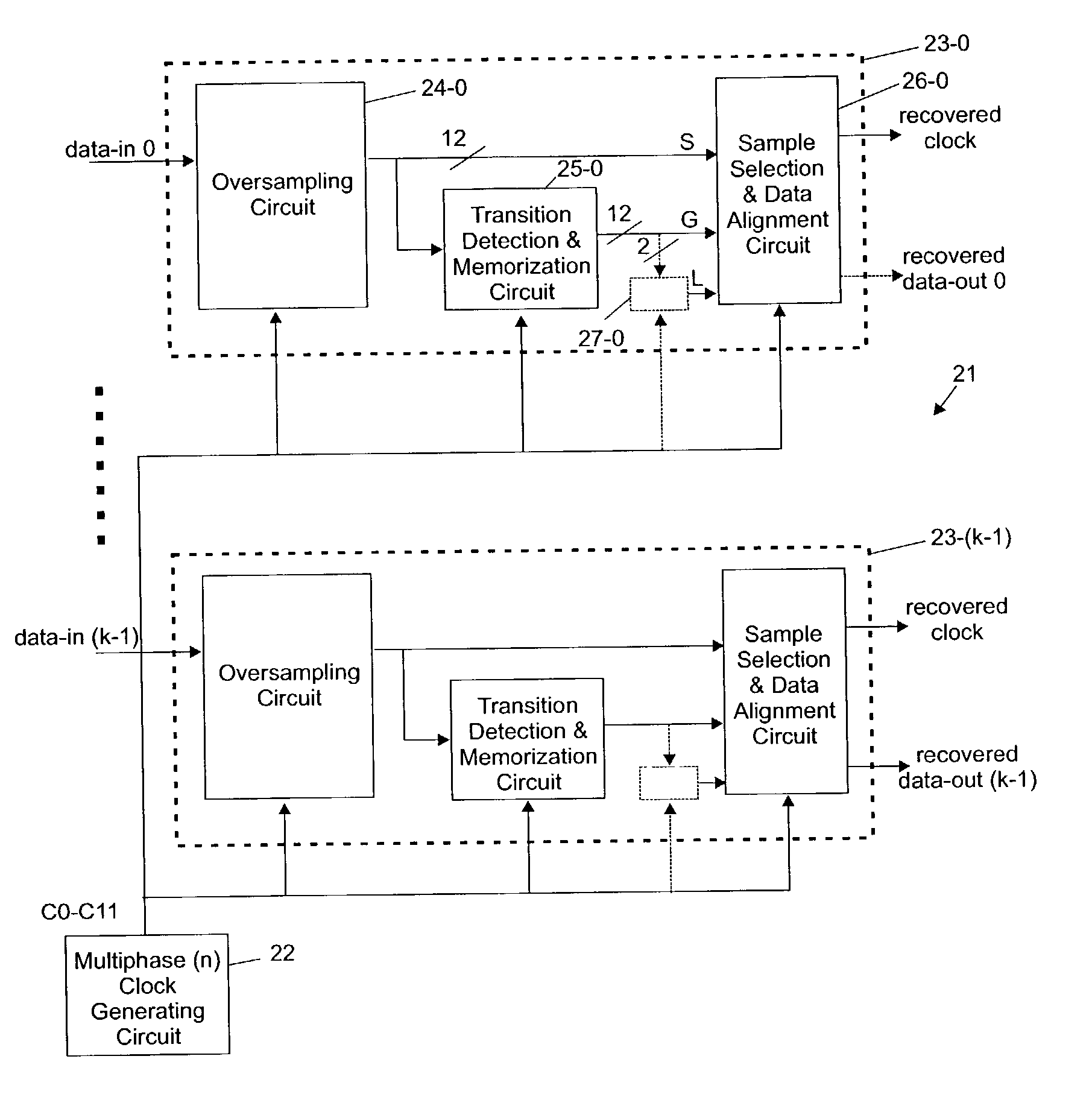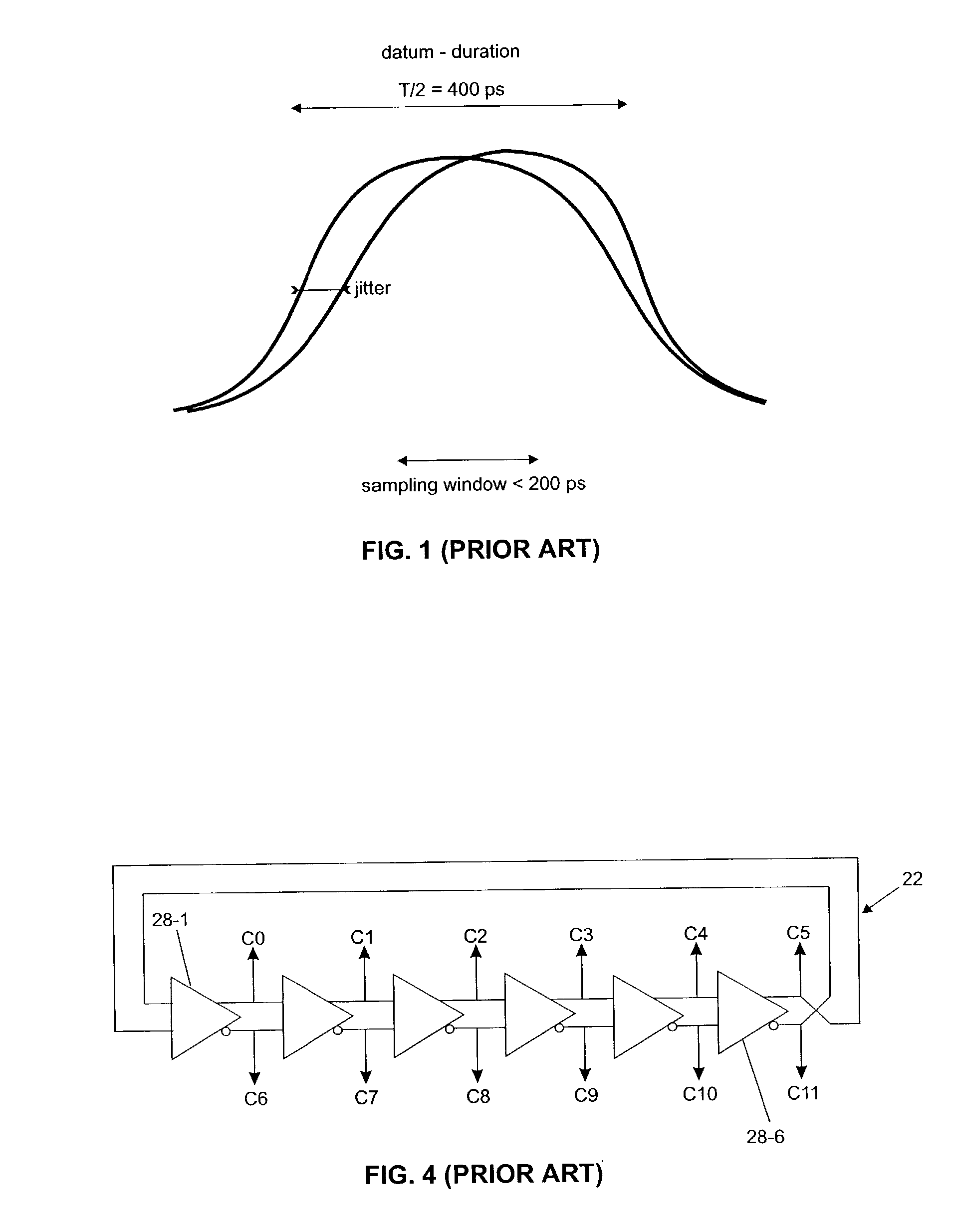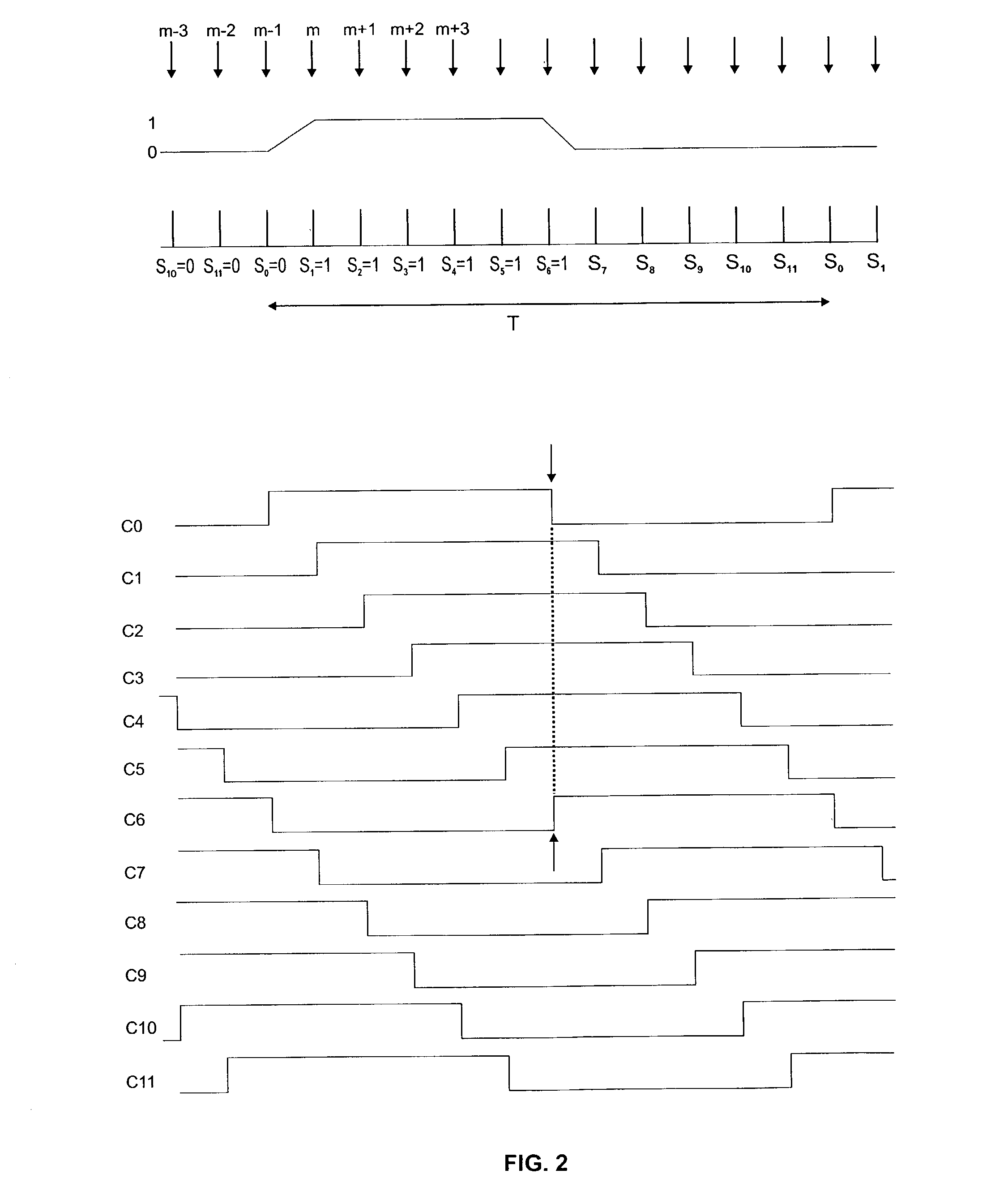Transition detection, validation and memorization circuit
a technology of transition detection and validation, applied in the field of high-speed binary data serial communication, can solve the problems of poor noise immunity of circuits, inability to reliably sample signals transmitted from one integrated circuit to another, and relatively slow signal transmission speed
- Summary
- Abstract
- Description
- Claims
- Application Information
AI Technical Summary
Benefits of technology
Problems solved by technology
Method used
Image
Examples
Embodiment Construction
[0023]In conventional data recovery (DR) and CDR circuits, two different phases of a reference clock signal delayed in time are used, one to detect a transition and the other to capture the data for subsequent processing. However, it should be admitted that because of possible metastability problems, the particular sampled signal (or sample) obtained by pet-Conning the sampling at a data transition (logic state 1 to 0 or vice-versa) is not reliable to accurately locate the exact position of the transition and the detection is even more complicated by the presence of glitches and false detections. As a result, the conventional techniques of sampling that have been practiced so far appear to be close to limit as the clock frequencies continue to sharply increase.
[0024]FIG. 2 is an example of a typical data bit stream, assuming that the clock frequency is half of the incoming data frequency (the frequency of the multiphase clock is usually the same or half of the frequency of the incom...
PUM
 Login to View More
Login to View More Abstract
Description
Claims
Application Information
 Login to View More
Login to View More - R&D
- Intellectual Property
- Life Sciences
- Materials
- Tech Scout
- Unparalleled Data Quality
- Higher Quality Content
- 60% Fewer Hallucinations
Browse by: Latest US Patents, China's latest patents, Technical Efficacy Thesaurus, Application Domain, Technology Topic, Popular Technical Reports.
© 2025 PatSnap. All rights reserved.Legal|Privacy policy|Modern Slavery Act Transparency Statement|Sitemap|About US| Contact US: help@patsnap.com



